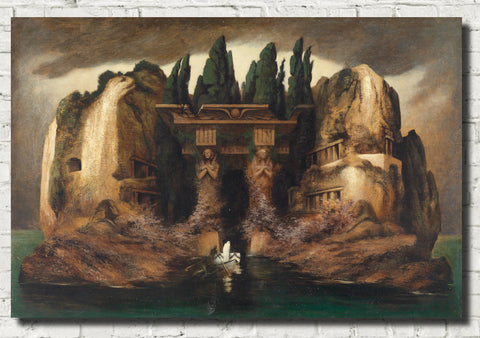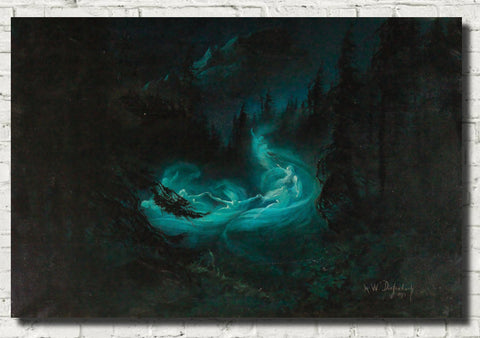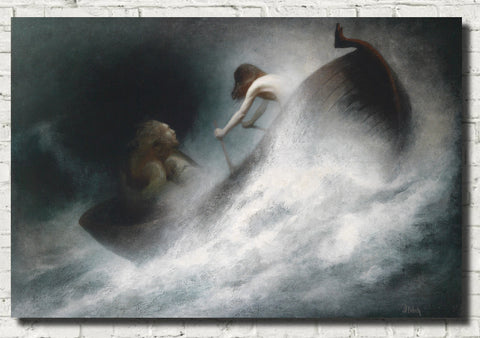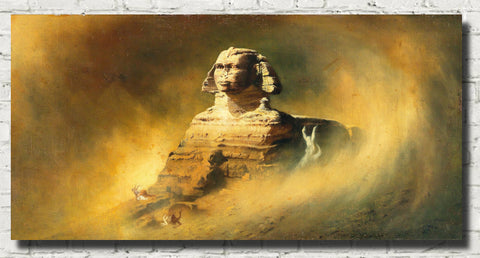Table of Contents:[hide]
Karl Wilhelm Diefenbach, a name that might not be as familiar to many, but his contributions to art and social reform are noteworthy. Born in 1851 in Hadamar, Germany, Diefenbach's life journey was marked by artistic brilliance, unconventional thinking, and a relentless pursuit of a utopian ideal. Let's delve into the life and legacy of this extraordinary figure.
Life and Artistic Journey
Diefenbach's artistic talents were evident from a young age. He received his early artistic education from his father and later studied at the Munich Academy of Fine Arts, where he was influenced by prominent artists of his time. Despite facing setbacks such as a crippling illness that affected his right arm, Diefenbach persisted in his artistic pursuits, eventually becoming known for his symbolist paintings.
Embracing the Natural Way of Life
However, Diefenbach's life took a significant turn when he embraced a holistic approach to living after recovering from a severe illness. Influenced by naturopathic principles and the teachings of figures like Arnold Rikli and Eduard Baltzer, Diefenbach became a proponent of naturism, vegetarianism, and a rejection of conventional societal norms.
Communal Living and Social Reform
Diefenbach's beliefs in communal living and social reform led him to establish several communes, including the renowned Himmelhof commune near Vienna. These communities, characterized by their adherence to vegetarianism, naturism, and alternative lifestyles, served as experimental grounds for Diefenbach's vision of a harmonious society in tune with nature.
Artistic Expression and Controversy
As an artist, Diefenbach's work often reflected his unconventional beliefs and ideals. His paintings, characterized by symbolism and allegory, served as visual expressions of his utopian visions. However, his radical ideas and lifestyle often courted controversy and ridicule from mainstream society, earning him labels such as the "kohlrabi apostle."
Legacy and Impact
Despite facing challenges and opposition during his lifetime, Diefenbach's legacy endures through his artwork and advocacy for social reform. His influence on alternative movements, including naturism and the peace movement, remains significant, and his ideas continue to inspire individuals seeking alternative ways of living and thinking.
Conclusion
In conclusion, Karl Wilhelm Diefenbach's life was a testament to the power of art and visionary thinking in challenging societal norms and envisioning a better world. As we reflect on his legacy, we are reminded of the importance of creativity, activism, and the pursuit of a more harmonious relationship with nature.
Karl Wilhelm Diefenbach Prints and Canvas Panels
Prints and ready to hang canvas panels of Karl Wilhelm Diefenbach's paintings are available in a range of sizes with fast worldwide delivery.
Karl Wilhelm Diefenbach FAQ's
-
Who was Karl Wilhelm Diefenbach?
- Karl Wilhelm Diefenbach was a German painter and social reformer born in 1851. He is renowned as a champion of alternative movements, including naturism and the peace movement.
-
What was Diefenbach's artistic style?
- Diefenbach was an independent representative of symbolism in art. His paintings often featured allegorical and symbolic elements, reflecting his visionary ideals and unconventional beliefs.
-
What inspired Diefenbach's advocacy for social reform?
- Diefenbach's advocacy for social reform was influenced by naturopathic principles, vegetarianism, and a rejection of societal norms. He believed in communal living and harmony with nature.
-
Did Diefenbach establish any communes?
- Yes, Diefenbach established several communes, including the Himmelhof commune near Vienna. These communities embraced vegetarianism, naturism, and alternative lifestyles, serving as experimental grounds for his utopian vision.
-
How did Diefenbach's lifestyle differ from mainstream society?
- Diefenbach's lifestyle rejected conventional societal norms, including monogamy and institutionalized religion. He advocated for a meat-free diet, naturism, and a holistic approach to living.
-
Was Diefenbach's art controversial?
- Yes, Diefenbach's art often courted controversy due to its unconventional themes and symbolism. His radical ideas and lifestyle also attracted ridicule and criticism from mainstream society.
-
What was Diefenbach's impact on alternative movements?
- Diefenbach is regarded as a significant figure in alternative movements such as naturism and the peace movement. His ideas continue to inspire individuals seeking alternative ways of living and thinking.
-
Did Diefenbach face opposition during his lifetime?
- Yes, Diefenbach faced opposition and criticism from mainstream society for his radical beliefs and lifestyle. He was often labeled as eccentric and faced challenges in promoting his vision of social reform.
-
What is Diefenbach's legacy?
- Diefenbach's legacy endures through his artwork and advocacy for social reform. He is remembered as a visionary thinker who challenged societal norms and envisioned a more harmonious relationship with nature.






